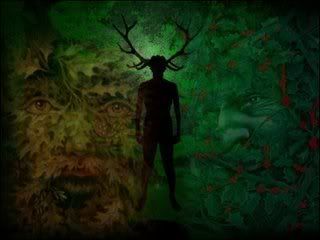Margaret Murray (Wikipedia)
Margaret Alice Murray (13 July 1863 – 13 November 1963) was a prominent British Egyptologist and anthropologist. Primarily known for her work in Egyptology, which was "the core of her academic career," she is also known for her propagation of the Witch-cult hypothesis, the theory that the witch trials in the Early Modern period of Christianized Europe and North America were an attempt to extinguish a surviving pre-Christian, pagan religion devoted to a Horned God. Whilst this theory is today widely disputed and discredited by historians like Norman Cohn, Keith Thomas and Ronald Hutton, it has had a significant effect in the origins of Neopagan religions, primarily Wicca, a faith she supported.
Her work in Egyptology took place largely alongside her mentor and friend, the archaeologist Sir Flinders Petrie, whom she worked alongside at University College London. One of the earliest women to "make a serious impact upon the world of professional scholarship," she was also an ardent feminist, being actively involved in the Suffragette movement. From 1953 to 1955, she was the president of the Folklore Society, although since her death various members of the society have attempted to dissociate the organization from her and the Murrayite theory of the Witch-Cult.
The Witch-Cult in Western Europe (Wikipedia)
The Witch-Cult in Western Europe by Margaret Murray was published in 1921, at a time when the influence and success of The Golden Bough by anthropologist James George Frazer was at its height. In those days Margaret Murray was celebrated in university circles as the expert on western witchcraft. In the period 1929-1968 she even wrote the article on witchcraft in the successive editions of the Encyclopaedia Britannica. In 1962, her main work was reprinted by Oxford University Press. Her theory, also known as the witch-cult hypothesis suggests that the things told about witches in Europe were in fact based on a real existing pagan religion that worshiped a horned god.
Witch-cult hypothesis (Wikipedia)
The Witch-cult is the term for a hypothetical pre-Christian, pagan religion of Europe that survived into at least the early modern period. As late as the 19th and early 20th centuries, some scholars had postulated that European witchcraft was part of a Satanic plot to overthrow Christianity; most of the evidence for this theory was compiled by studying the accounts of the persecutors in the witch trials in early modern Europe. From the late 19th century an opposing view arose, that witches were not Satanists, but adherents of a surviving underground pagan religion. In the 20th century, the theory gave rise to the neopagan religion of Gardnerianism, with its various offshoots and traditions summarized under the term Wicca.

The theory was pioneered by authors such as Karl Ernst Jarcke and Jules Michelet in the 19th century, but received its most prominent exposition with Margaret Murray's 1921 book, The Witch-Cult in Western Europe, and her contributions to the Encyclopedia Britannica. Scholars have criticized the theory and the general consensus is that the witch cult never existed and is entirely pseudohistorical, while scholars consider some folk magical practices to have influenced witchcraft stereotypes.
Gerald Gardner claimed that he had discovered the New Forest Coven, a group still practicing the religion (which he called Witchcraft) in his 1954 book, Witchcraft Today, a claim which was endorsed by Murray. Similarly, Sybil Leek, Robert Cochrane, Charles Cardell, Rosaleen Norton and Alex Sanders also made claims to having been members of a family line of adherents to the witch-cult. Some contemporary Wiccans have since distanced themselves from the theory.
According to the general consensus in the mainstream historical-academic community---including scholars who have been involved in studies specifically pertaining to religious studies and ancient folklore---Margaret Murray’s “Witch-cult hypothesis” has been sufficiently discredited. As this moment, my mind is failing to come up with adjectives to sufficiently describe the extent to which I disagree. They’re not going back far enough! Margaret Murray was right.
The problem stems from the failure to---historically-speaking---divorce both ancient Germanic and ancient Mediterranean peoples from Europe long enough to at least take a look at the culture of the proto-Europeans prior to 5,000 years ago. They just can’t seem to wrap their minds around the idea that proto-Germanic people didn’t live in Europe until about 5,000 years ago; and that true- Mediterraneans probably didn’t arrive in Europe until about 9,000 years ago.
The origins of the deconstruction of the “Witch-cult” occurred long before Christianity. This is such a no-brainer that it frustrates me! I’ll go through the logical steps yet again for posterity’s sake. The last Ice Age occurred about 25,000 years ago. Every 45,000 years, after both poles have frozen enough of the earth’s water to sufficiently weigh them down, the incredible amount of sheer weight forces a movement of the Earth’s tectonic plates about 2,000 miles. The outer crust of the earth literally moves as if it were a loose outer peel of an orange. This is not the same natural phenomena as an Ice Age.
.


No comments:
Post a Comment